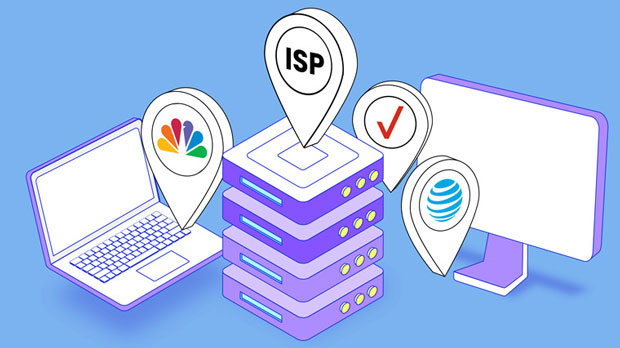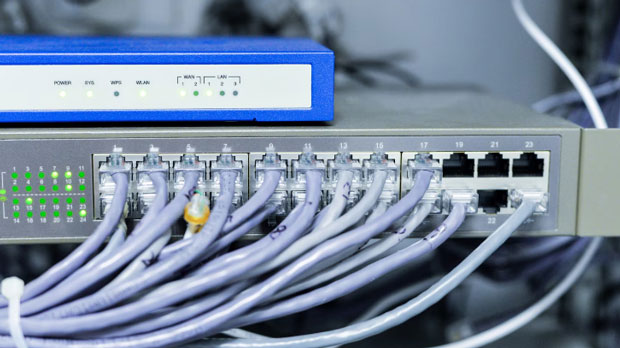What is an IP Proxy Server? How does it work?
An ip proxy server is an intermediary server that sits between a user and the internet. It acts as a gateway, rerouting requests and responses between the client (user) and the websites or services they wish to access. This process hides the user's original IP address, providing anonymity and potentially offering access to restricted content. In simpler terms, when a user connects to a website via a proxy, the website only sees the proxy’s IP address rather than the user's, ensuring a level of privacy and security. This article will dive deeper into the functionalities, types, and benefits of IP proxy servers, offering insight into how they contribute to online privacy and security. Understanding IP Proxy ServersAn IP proxy server acts as a middleman for internet communication. It intercepts requests from users, processes them, and forwards them to the intended destination on behalf of the user. Once the destination server responds, the proxy forwards the response back to the user. Essentially, proxies provide a secure pathway through which data flows between the user and the internet.The most fundamental purpose of an IP proxy server is to mask the user’s IP address. By masking the original IP, it creates an extra layer of privacy, ensuring that websites cannot track the user’s location or device specifics. This is particularly beneficial for maintaining anonymity during online activities, as it prevents websites from gathering data on the user’s browsing habits, geographical location, and device information.How IP Proxy Servers WorkTo understand how an IP proxy works, let’s break down the process in simple terms:1. User Request: The user wants to access a website or a specific service online. Instead of connecting directly to the website, they send their request to the proxy server. 2. Proxy Server Handling: The proxy server processes the user’s request and forwards it to the intended website or online service. The key here is that the website or service only sees the proxy’s IP address, not the user's real IP address.3. Website Response: The website responds to the proxy server with the requested data or content, such as a web page, video, or file.4. Data Relay: The proxy server then relays the response to the user, completing the request.This process ensures that the user’s original IP address is hidden, offering anonymity and security. Additionally, proxies can cache content, store previous responses, and improve loading times for users by reusing cached data. Types of IP Proxy ServersThere are several types of proxy servers, each designed for different purposes and functionalities:1. residential proxies: These proxies use IP addresses assigned to real devices by Internet Service Providers (ISPs). They provide high anonymity because the proxy ip appears as a legitimate home or business IP address, making them difficult to detect by websites.2. Datacenter Proxies: Unlike residential proxies, datacenter proxies are generated by data centers and are often used for tasks such as web scraping or accessing restricted content. While they are faster and more affordable than residential proxies, they may be detected and blocked more easily.3. Public Proxies: Public proxies are free services that anyone can use. However, they tend to be unreliable and potentially unsafe due to overuse, slow speeds, and potential exposure to malicious actors.4. Private Proxies: A private proxy is dedicated to a single user or organization. It provides greater reliability and security than public proxies, offering users exclusive use of the proxy ip address.5. Rotating Proxies: These proxies change their IP addresses periodically to avoid detection. They are commonly used for web scraping and data extraction, as they help bypass IP-based restrictions and blocks.Benefits of Using an IP Proxy ServerThere are numerous advantages to using an IP proxy server, ranging from enhanced privacy to improved performance. Let’s look at the most significant benefits:1. Enhanced Privacy and Anonymity: The primary benefit of using a proxy server is its ability to mask the user's IP address, thereby protecting their identity and location. This is crucial for users who prioritize privacy in their online activities, whether it’s for personal browsing or business use.2. Bypass Geographical Restrictions: Many websites and online services impose geographical restrictions, only allowing access to users from specific locations. Proxies allow users to bypass these restrictions by masking their IP addresses and making it appear as though they are accessing the site from an approved location.3. Improved Security: Proxies can enhance security by filtering out malicious content, preventing users from visiting dangerous websites, and protecting against DDoS attacks. In enterprise settings, proxies can also block access to certain websites, reducing the risk of malware and phishing attacks.4. Faster Access and Bandwidth Savings: By caching frequently requested data, proxies can reduce loading times for websites and services. This improves user experience, especially for users accessing content from locations with slower internet connections. Furthermore, proxies can compress data to save bandwidth, which can be beneficial for large-scale operations or users with limited data allowances.5. Web Scraping and Data Collection: Proxies are essential for web scraping, a technique used to gather data from websites. By using proxies, users can avoid getting blocked or rate-limited by websites, ensuring continuous data collection. Rotating proxies are particularly useful in such cases.Considerations When Using IP Proxy ServersWhile IP proxy servers provide various benefits, users should consider a few factors before integrating them into their online activities:1. Speed and Latency: Some proxy servers, especially free ones, can significantly reduce browsing speeds. Choosing the right type of proxy, like a datacenter or rotating proxy, can help mitigate this issue.2. Security Risks: Not all proxies are secure. Free proxies, in particular, may expose users to privacy risks, including data interception and malware. It’s essential to choose reliable, trustworthy proxy services to ensure safety.3. Legal and Ethical Concerns: Using proxies to bypass restrictions or scrape data can sometimes violate website terms of service or even legal guidelines. It’s essential to be aware of the legal landscape surrounding proxy usage in different regions.4. Cost: While free proxies exist, premium proxies usually offer better performance, security, and reliability. Businesses, in particular, may need to invest in private proxies to maintain confidentiality and ensure smooth operations.ConclusionIn summary, an IP proxy server is a valuable tool for anyone looking to enhance online privacy, bypass restrictions, and improve security. By acting as an intermediary, it masks the user’s IP address, preventing websites from tracking their activities. With various types of proxies available, users can select the one that suits their specific needs, whether for personal use or business. However, users must consider factors such as speed, security, and legality when choosing a proxy service. Ultimately, proxies play a critical role in maintaining a safe, anonymous, and efficient online experience.
2025-02-11

























































